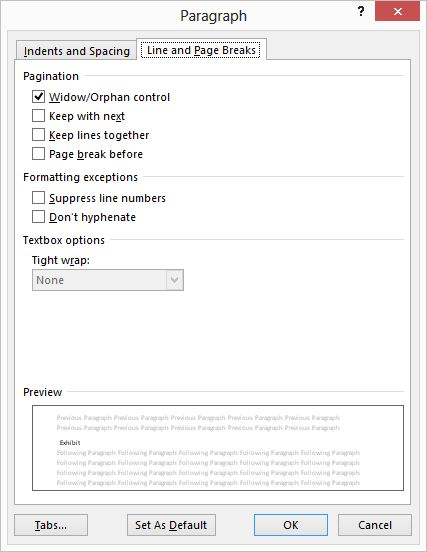

Also, there is some debate among typographers about the definition of these terms.

However, today, it is often a matter of the writer having no idea that these are even problems. So a 5-line paragraph may not be broken across two pages at all, and 6-line paragraph may only be broken as 3 and 3 lines. Widows and orphans have long been considered typography crimes resulting from laziness of the typesetter. The example in the question thus means that a page break may not appear inside a p, h2, or h3 element, unless at least 3 lines of it appear on each page. It’s difficult to find use cases even for these. So why would you set those properties? Normally only as orphans: 1 or widows: 1 or both, to specify that typographic orphans or widows need not be avoided. The initial value of both properties is 2, which thus means that the single line orphans and widows (i.e., orphans and widows in the typographic sense) are to be avoided. It is rather difficult to find use for such a setting. Instead, it says that less than 4 lines of a paragraph at the end of a page be considered an orphan and be avoided. orphans: 4 does not mean four orphans anywhere. The definitions of the CSS properties are somewhat unnatural, since e.g. These generalizations are not particularly useful there is generally nothing wrong with having two (or three or.) lines of a paragraph on a page other than the rest of the paragraph. The CSS concepts are generalizations of the typographic concepts, replacing “the last line” by “the last few lines” and “the first line” by “the first few lines”. They are regarded as avoidable, though opinions disagree on how serious the problems are. So both are single lines that have been isolated from the rest of the paragraph by a page break. Read our definition of low-risk investment to find out more about cautious investing.In typography, a “widow” is the last line of a paragraph that appears at the start of a new page, and an “orphan” is the first line of a paragraph that appears at the end of a page. Find out more about widow-and-orphan stocks. Because there’s little or no competition among suppliers, the stock is much sought after and consistently yields excellent dividends as the customer base remains solid or increases. They've traditionally tended to be associated with companies that have a monopoly over the market, such as utility and telecommunications providers. You’ll most likely find widows and orphans in non-cyclical industries that are less likely to be affected negatively during difficult trading conditions. What you need to know about widow-and-orphan stocks. However, the 2008 recession showed that even the most resilient of companies can struggle when times get really hard. The term ‘widows and orphans’ stems from the fact that they were the only investments suitable for the most vulnerable members of society during economic downturns. Where have you heard about widow-and-orphan stocks? This type of investment is often associated with big companies that have a long track record of performing strongly and consistently, even in testing economic climates and bear market conditions. It’s a low-risk stock that pays high dividends.


 0 kommentar(er)
0 kommentar(er)
